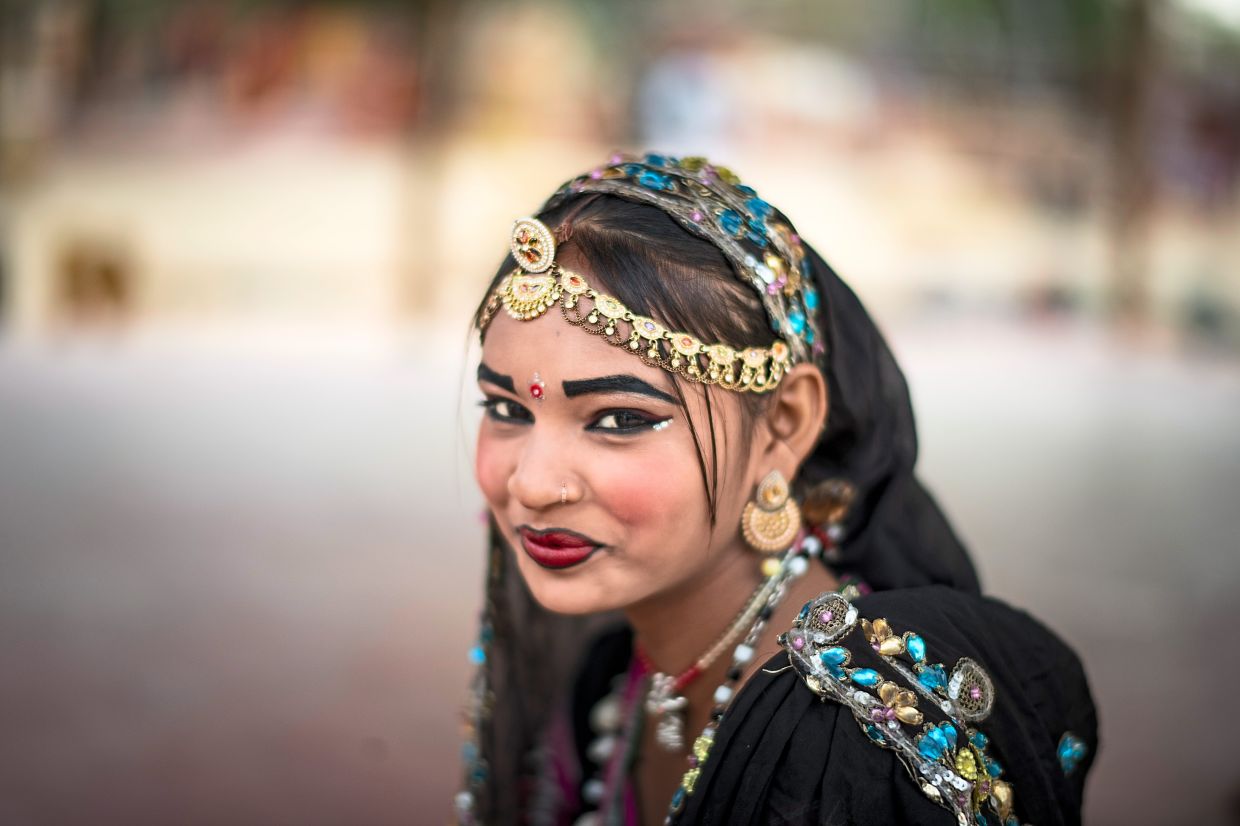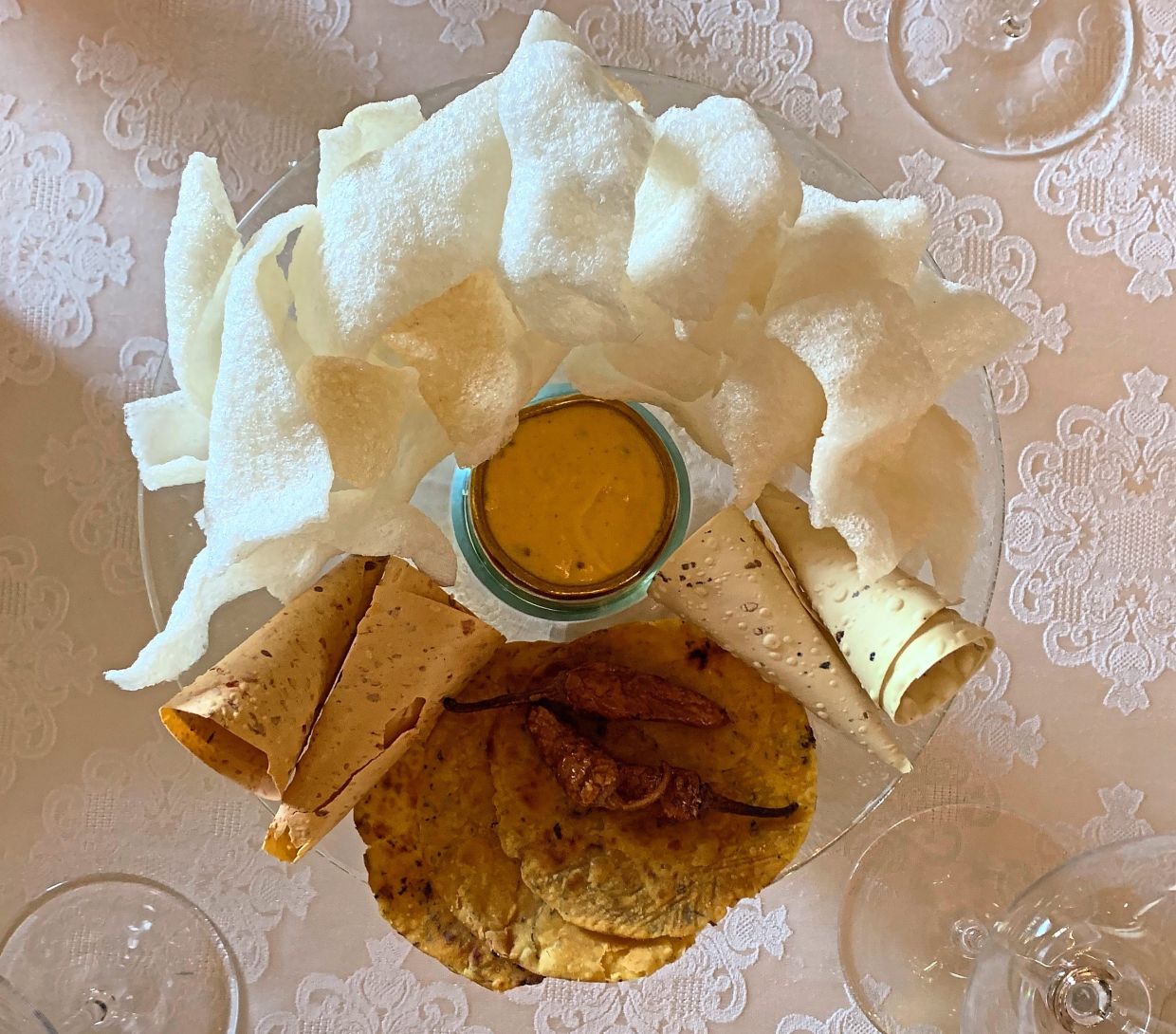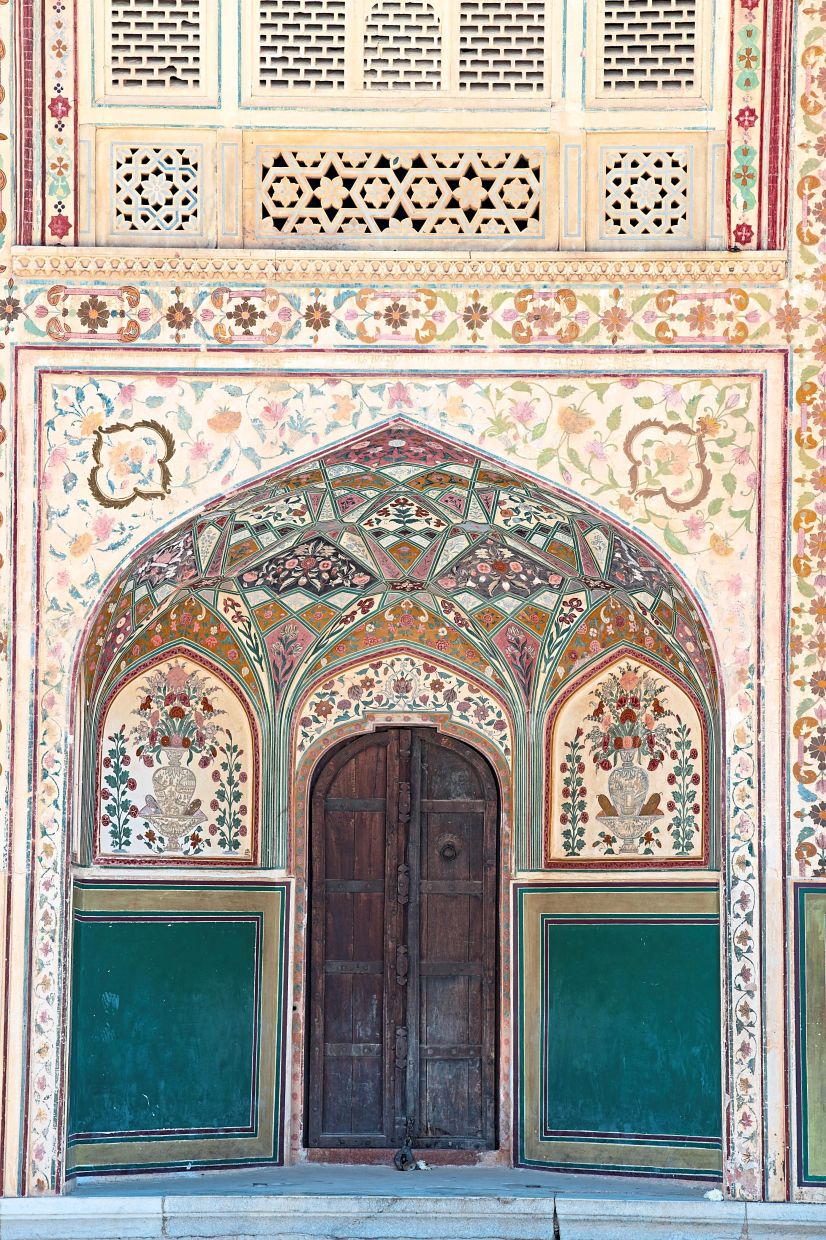Rajashtani outfits are always colourful and beautifully embellished with beads and shiny trinkets. — Photos: ABBI KANTHASAMY
Settling into the rhythm of Jaipur, a city in India pulsing with life and where history is not just etched into its pink sandstone walls but is alive in its streets and its people, I find myself on a journey through taste, time, and tradition.
The Pink City, as it’s lovingly called due to the blush-hued buildings that define its historic centre, holds its past close. Jaipur’s culinary scene is a rich tapestry that mirrors the vibrant saris that dance in the breeze and the turbans that are as colourful as the city itself.
Walking through the bustling lanes, I’m struck by the sheer diversity of the people. Men in dhotis haggle over vegetables as women in mirror work lehengas choose spices that will colour their next meal as vividly as their attires colour the streets.
It’s here, among the throngs, that one starts to understand Rajasthani cuisine. The scarcity of water and fresh green vegetables has sculpted this fare into what it is: a cornucopia of beans and lentils, milk, and ghee, with a burst of chilli to challenge the bravest of palates.
The history of Jaipur is deeply intertwined with its food. Founded in 1727 by Maharaja Sawai Jai Singh II, the city was built on the principles of Vastu Shastra, an ancient Hindu architectural practice. This harmony is mirrored in its food, a balance of sweet, spicy, and savoury that is as carefully crafted as the city’s layout.
Take kachori, for instance, a spiced, stuffed pastry that bursts with flavour as surely as the city’s architecture bursts with stories. The mawa kachoris of Jaipur, filled with thickened milk and nuts, are not just sweets, they are parcels of history, created for the first time in the royal kitchens of the city, a regal snack for a city that celebrates the grandiose.
The forts of Jaipur, like Amer Fort and Nahargarh Fort, stand testament to the city’s past. These strongholds, once the seat of kings and queens, are now silent witnesses to the city’s changing skyline. They’ve seen battles, witnessed royal festivities, and heard the whisper of palace intrigue. And just like these forts have protected the city, the cuisine of Jaipur protects its heritage.
Every dish tells a story. The laal maas, traditionally made with wild game and simmered in a sauce ripe with Mathania chillies, speaks of a time when the hunt was not sport but survival. Now, it graces every menu, a fiery reminder of the warrior spirit that once defined this land.
The ghewar, a lattice of fried batter soaked in syrup, adorned with slivers of silver leaf, recalls festivals and fairs where royalty would shower their subjects with these sweet, edible jewels. It is a dish that has celebrated countless monsoons and continues to sweeten occasions.
But beyond the forts and the famed dishes, it’s the people that give Jaipur its true flavour. The chaat wallahs who serve up plates of tangy goodness with a side of quick wit, the chai vendors whose masala tea boils over as they recount tales of the city’s past, and the home cooks whose recipes have been passed down through generations.
In the quiet courtyards, away from the prying eyes of the bazaar, I discover the soul of Rajasthani cooking. In the home of a local family, I am treated to a meal that is as much about hospitality as it is about food. The dal baati churma here is not just a dish but a ritual, the baati representing the sun-hardened land, and the dal, the nurturing monsoon. With each bite of the sweet churma, I taste the love that has kneaded it.
Sitting on low stools, we eat with our hands, the truest way to connect with food. The host’s stories, laced with pride and nostalgia, are as potent as the hing (asafoetida) in the ker sangri, a dish of wild berries and beans that captures the essence of the desert that surrounds us.
It’s in these intimate gatherings that you realize that Rajasthani cuisine is not defined by a single taste or texture. It’s bold and assertive like the fort walls, yet sweet and welcoming like the local dialect.
My journey through Jaipur is punctuated with these moments of connection. As I watch a woman in a fuchsia sari expertly swirl batter for jalebi, her bangles clinking in a rhythmic symphony, I am reminded that every swirl, every sizzle, every spice in Jaipur’s kitchens is a note in the city’s ongoing symphony.
As the day winds down, the sunset casts a golden glow on the city, mirroring the saffron in a dish of kesar bhat. Jaipur doesn’t sleep but simmers down to a gentle sizzle, the night markets coming alive with the smoky aroma of grilling meats and the sweet fragrance of rosewater from the gulab jamun.
Jaipur is an experience for all senses, but most of all, it is a feast for the soul. The colours, the people, their clothes, and their laughter are as much a part of its food as the ingredients themselves. Here, history is served up on a plate, and every meal is a journey through time.
The forts might be Jaipur’s stone-bound chronicles, but it’s in the pots simmering in its kitchens, the stories traded over steaming cups of chai, and the laughter ringing through its dining halls that the heart of Jaipur truly beats. And as I leave this city, it’s these flavours – rich, robust, and resplendent – that I carry with me, a lingering taste of a land where every dish is a story and every bite, a memory etched in time.
The views expressed here are entirely the writer’s own.
Abbi Kanthasamy blends his expertise as an entrepreneur with his passion for photography and travel. For more of his work, visit www.abbiphotography.com.













